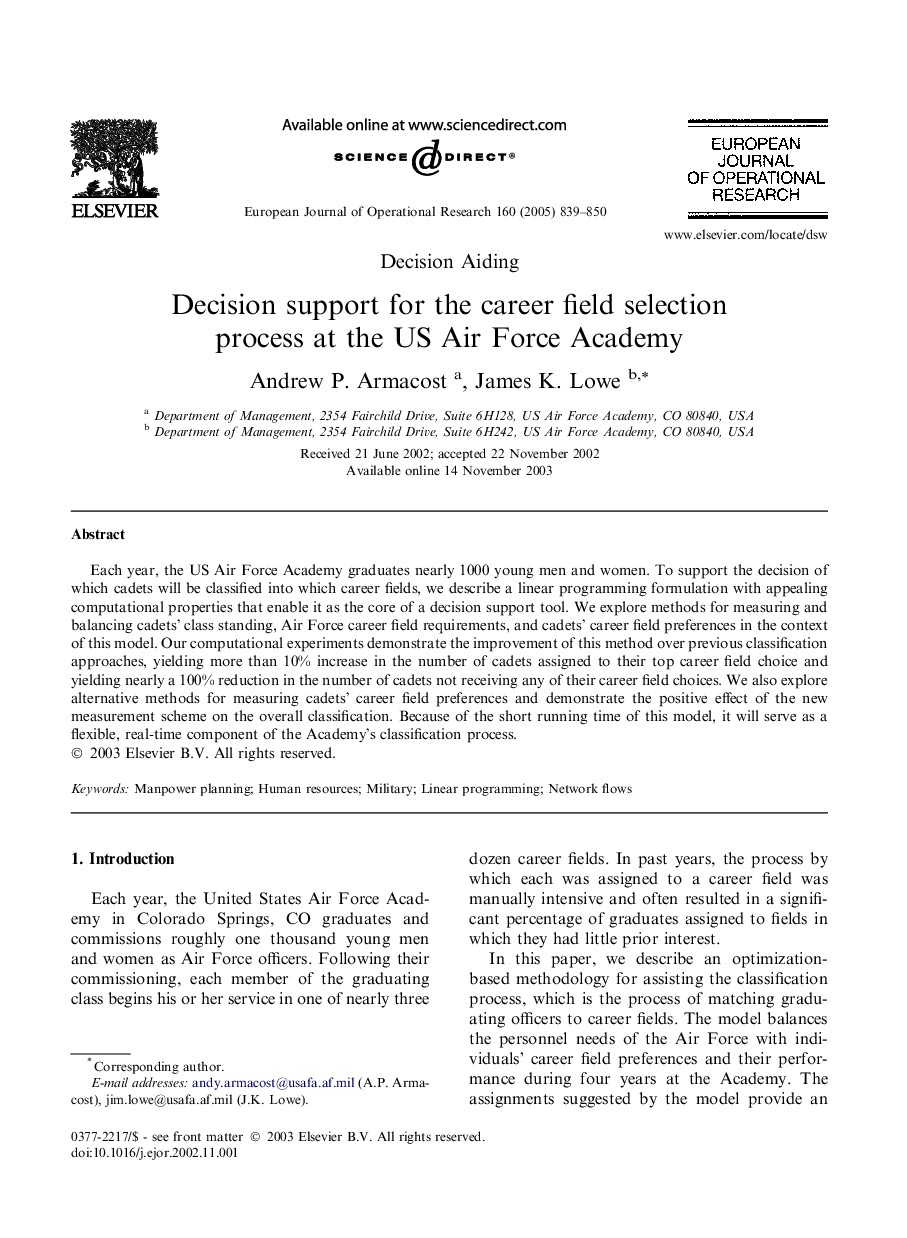| Article ID | Journal | Published Year | Pages | File Type |
|---|---|---|---|---|
| 9664069 | European Journal of Operational Research | 2005 | 12 Pages |
Abstract
Each year, the US Air Force Academy graduates nearly 1000 young men and women. To support the decision of which cadets will be classified into which career fields, we describe a linear programming formulation with appealing computational properties that enable it as the core of a decision support tool. We explore methods for measuring and balancing cadets' class standing, Air Force career field requirements, and cadets' career field preferences in the context of this model. Our computational experiments demonstrate the improvement of this method over previous classification approaches, yielding more than 10% increase in the number of cadets assigned to their top career field choice and yielding nearly a 100% reduction in the number of cadets not receiving any of their career field choices. We also explore alternative methods for measuring cadets' career field preferences and demonstrate the positive effect of the new measurement scheme on the overall classification. Because of the short running time of this model, it will serve as a flexible, real-time component of the Academy's classification process.
Related Topics
Physical Sciences and Engineering
Computer Science
Computer Science (General)
Authors
Andrew P. Armacost, James K. Lowe,
